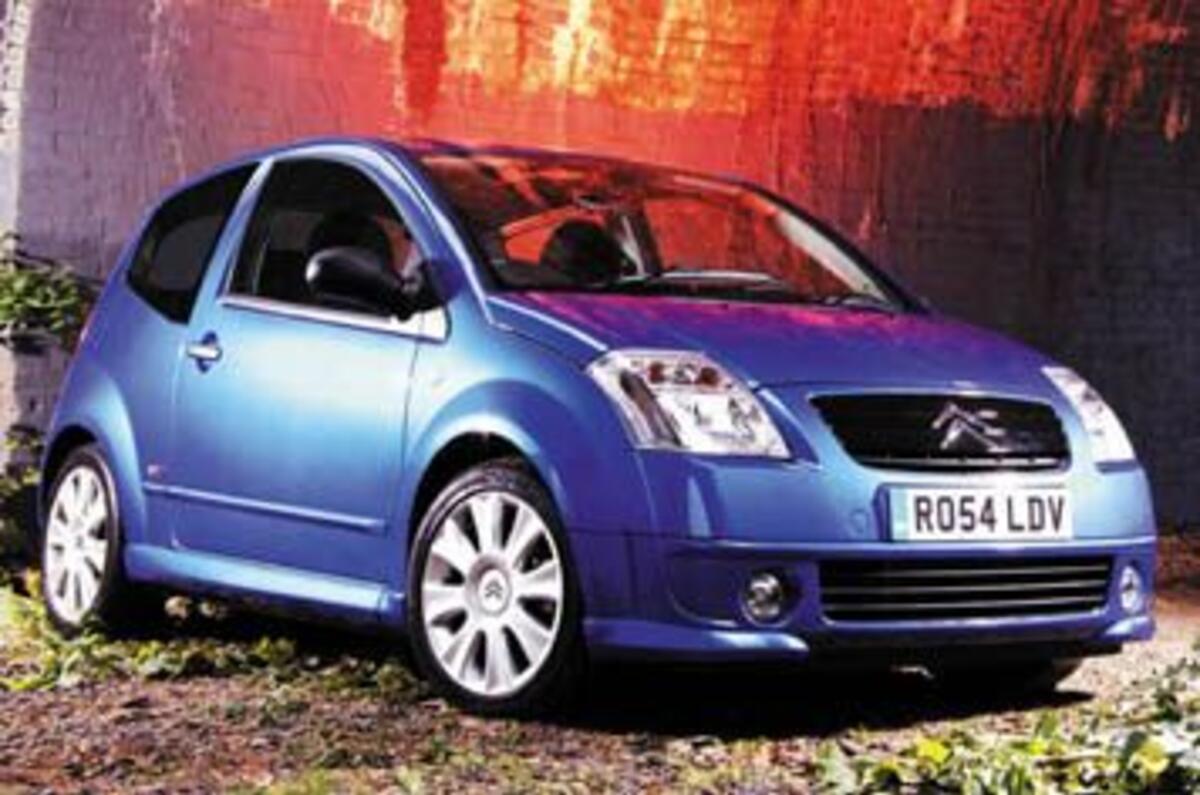It’s just an innocent turning off a quiet country road. Single-track, an ugly, plummeting ribbon of scarred bitumen with enough evil cambers to show disregard for any EU road-building directive.
The surface varies in height by a foot: two troughs worn by the passage of a thousand tractors. Add in cheering fans and blistering heat, and if it wasn’t for the verdant landscape in my peripheral vision, this could be a stretch of the Tour de Corse rally.
Surely the Citroën C2 VTS’s nose will scrape the tarmac with the ‘skkkershh’ of a WRC car’s grounding front splitter? It doesn’t. The little Citroën jiggles furiously but tightly, purposefully. No noise, no shards of sump in the rear-view mirror. Now I’m on a great line for a fast right over a bridge: clear exit, soft verge, gravel, temptation. Easy right over crest – cut maybe. I’ve never had an ‘easy right over crest – cut maybe’ moment in a C2 VTR. Has anyone?
Autocar doesn’t like the C2 VTR. Too many of us here have enough memories – not to mention crumpled service invoices and old MoTs – of previous Peugeot-Citroën hot hatch classics to fall for a ‘yoof market’ special that’s slow, hobbled by an atrocious gearbox and a chassis of limited ability.
Despite initial denials, however, the C2 has spawned a hotter model in the mould of the old Saxo VTS with which it shares its name, and the UK gets it first.
The VTS uses the same 1587cc 16v motor as the C2 VTR – itself carried over from the Saxo. Citroën cites changes to the cams, valve springs, fuel injection and exhaust systems, as well as a new aluminium inlet manifold, and power jumps from the VTR’s 110bhp to 125bhp at 6500rpm, 5bhp more than the old Saxo.
There’s 105lb ft of torque, 2lb ft down on the Saxo but spread over a wider range and peaking at 3750rpm instead of 5200rpm. After the lethargy of the VTR, it’s refreshing to find that the twin-cam has re-discovered its lungs, pulling with genuine bite to the limiter with the kind of slightly demented howl that begs you to stretch it time after time. Less impressive is its mid-range shove, but to be fair the launch car only had 600 miles under its wheels and past experience of this engine tells us it’ll get significantly quicker. Nevertheless, at 1083kg (over 100kg more than a Saxo) the VTS no longer has the true snappiness of a genuine flyweight.
To take advantage of the extra top-end urge, Citroën has specified a close-ratio gearbox. The chrome-topped lever has a sloppy feel but can be rushed through the gate with tremendous speed, the velocity of which would have flames licking from the circuitry of the VTR’s Sensodrive ’box.
It takes no longer than the first proper corner to discover that this VTS is a very different animal to the VTR. It’s a fast left-hander, taken at about 60mph. Turn in and the VTS’s nose darts suddenly for the verge, requiring some instinctive counter steering to avoid an embarrassing meeting with the greenery.
That’ll be the new quick-rack steering, with just 2.6 turns lock-to-lock instead of three. Now gentle corners require only a squeeze of the wheel with either hand to force a change in direction, and rarely do you need to cross your arms. Sadly, despite a reassuring increase in weight away from the straight-ahead, the electric assistance leaves it almost devoid of feedback. Not a surprise, but a pity nevertheless.


















Add your comment